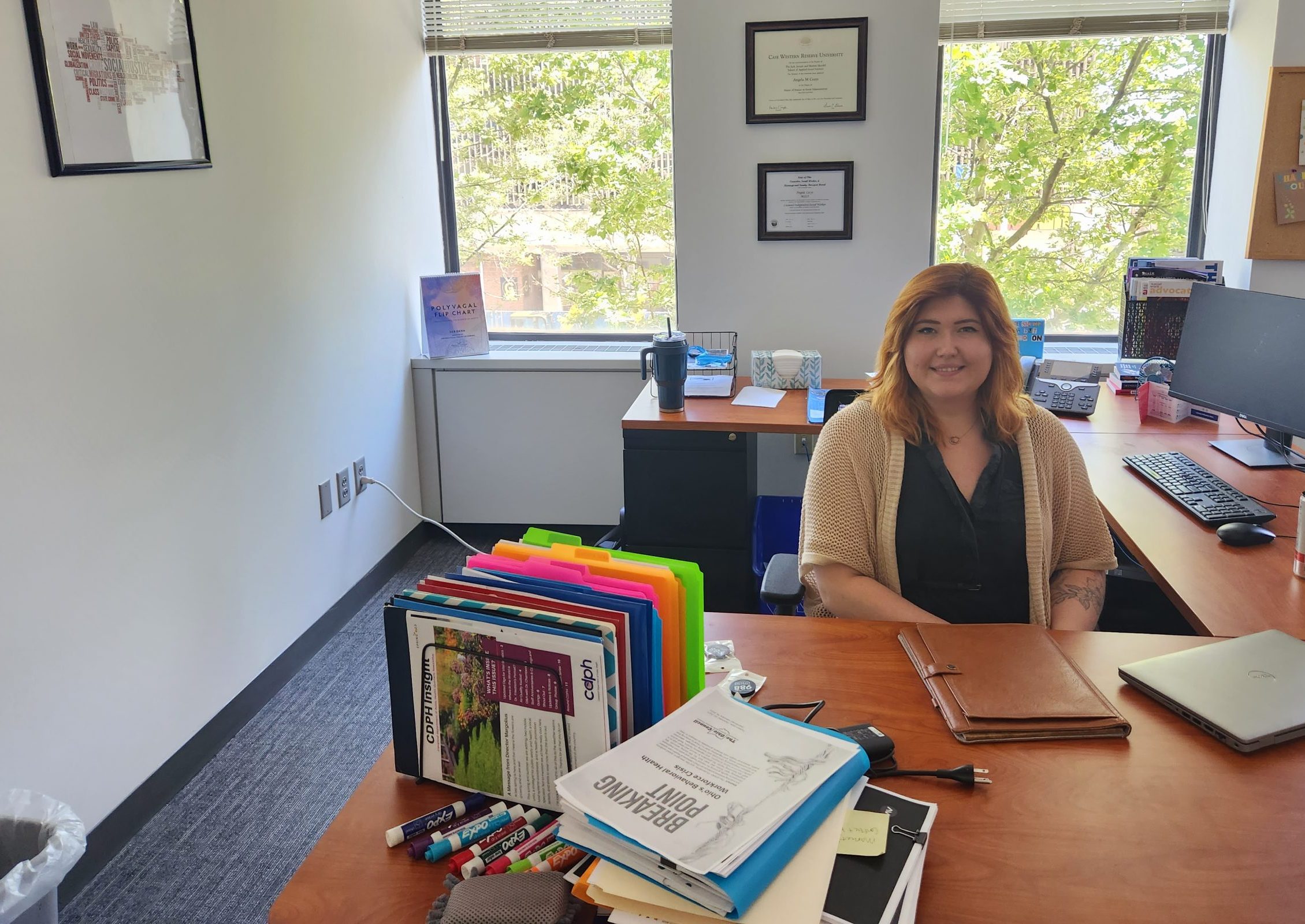People of color, unhoused people and members of the LGBTQ+ community want the same respect, empathy and compassion that other citizens expect from first responders, but they don’t always get it. That’s one of the findings in a new report based on surveys of nearly 600 people who have called 911.
Policy Matters Ohio spent a year working with community organizations that provide social services in Cleveland to conduct the surveys. The report was the second part of a study that looked into people’s experiences with first responders and with crisis response, as the county gets ready to launch a non-police crisis response program – called care response – later this summer.
What is care response? Care response is a program where a mental health expert and often a paramedic respond to emergency mental health crisis calls. This program does not involve police at all.
While the study is not directly tied to the county’s care response program, it is helping inform county officials on how to plan the new program. The Policy Matters report offers recommendations for the county, including:
- Strengthen community engagement and participation.
- Provide appropriate, ongoing training.
- Establish clear, practical protocols to be able to quickly respond to people’s mental health needs in an emergency.
The Alcohol, Drug Addiction and Mental Health Services (ADAMHS) Board of Cuyahoga County is taking these recommendations into account as it gets ready to start care response in two Cleveland ZIP codes – 44105 and 44102.
Scott Osiecki, ADAMHS Board CEO, said the reports offer the county more data to consider as it works to meet the needs of those who are most likely to use the program.
The ADAMHS Board is also working with the Cleveland Department of Public Health to create a more formal process for transferring calls between 911 and 988, the mental health crisis hotline. Initially, care response teams will only respond to 988 calls.
Survey reached underrepresented voices
Angela Cecys, senior strategist for public safety and health with the Cleveland Department of Public Health, is tasked with building a working relationship between public health and public safety efforts; planning a long-term strategy for crisis intervention teams, co-response and care response; and finding funding for those programs.
Cecys said she plans to use the report’s findings to guide her work. She said the report tells a unique story from perspectives of often underrepresented voices, such as the LGBTQ+ community and the unhoused population.
“I don’t think that we’ve had such a detailed, purposeful data story from their perspective that really hones in on those subpopulation perspectives,” Cecys said.
Part one of the Policy Matters study focused on the unhoused population.
Piet van Lier, one of the report’s authors and senior researcher with Policy Matters, said it’s important to note how many people in part two of the study — 52% — have also experienced homelessness.
The authors’ goal was to get input from people most likely to use crisis response services. They focused on reaching LGBTQ+ community members, people of color, people diagnosed with severe mental illnesses or substance use disorders, and those living in historically underserved or overpoliced neighborhoods.
Responses varied widely
The report includes survey responses from 580 people about their experiences with emergency responders such as police, EMS workers, firefighters, and social workers or mental health professionals.
About three in five respondents talked about their own experiences, “while others relayed experiences that had occurred to others in their lives,” according to the report.
People were asked to rate their interactions with first responders. The responses varied widely:
- 48% said they had “very positive” or “positive” interactions with the first responder.
- 31% rated interactions as “neutral.”
- And 21% said they were “negative” or “very negative.”
Two open-ended questions about interactions followed: “What did the first responder(s) do that made the interaction feel positive or negative?” and “What made you feel safe or unsafe in this interaction?”
Something else that stood out to the report’s authors was how often people said they had neutral experiences but later in a more open-ended question described negative and positive interactions.
For example:
“I told them multiple times that I am trans…. When the officer patted me down [they] continuously grabbed my crotch and other places saying, ‘Something’s not right.’”
“When I asked for a ride to a shelter, they wouldn’t help me. Told me I should walk because I ‘could stand to lose some weight.’”
“Helped me find a shelter that would take me with AIDS/HIV.”
“I felt safe because their tone was respectful.”
One of the study’s authors said the open-ended responses provided a lot of insight.
The questions “gave you a peek into people’s interpretation of what positive or negative means,” said Bree Easterling, social justice outreach and organizing specialist with Policy Matters and one of the people who conducted surveys.
People felt discriminated against
Rita Stupka, program coordinator for Rainbow Pioneers, the seniors group at the LGBT Community Center of Greater Cleveland, surveyed people in Ohio City.
She said many of the people she talked to, especially people of color, told her they had felt discriminated against by police and calling police was a last resort.
Stupka said she didn’t realize how unsafe people felt calling the police, especially people of color, those who are unhoused or part of the LGBTQ+ community.
“That was really sad to see because the police are there for all of us,” she said. “You know, they’re for the community members, and they are absolutely part of our community. And to be discriminated against like that, it was sad.”
Committee to help with community outreach
Osiecki said the ADAMHS Board will assemble a committee, which they’re calling a care committee, to make recommendations about the care response program and help with community outreach.
Residents suggested an oversight committee during a series of listening sessions the ADAMHS Board held in the spring.
The committee will include advocates, mental health care providers and other organizers and residents from the two ZIP Codes, Osiecki said.
“So part of the care committee is making sure that we’re hearing from the community, looking at information that’s shared with us from the community, as well as statistics and things from the care response pilot program when it gets going,” he said. “So part of it is relationship building with community organizations and the residents.”
Many survey respondents told Easterling they wanted people working in a care response team to always remember “that you’re responding to a person on one of the worst days of their life.”





